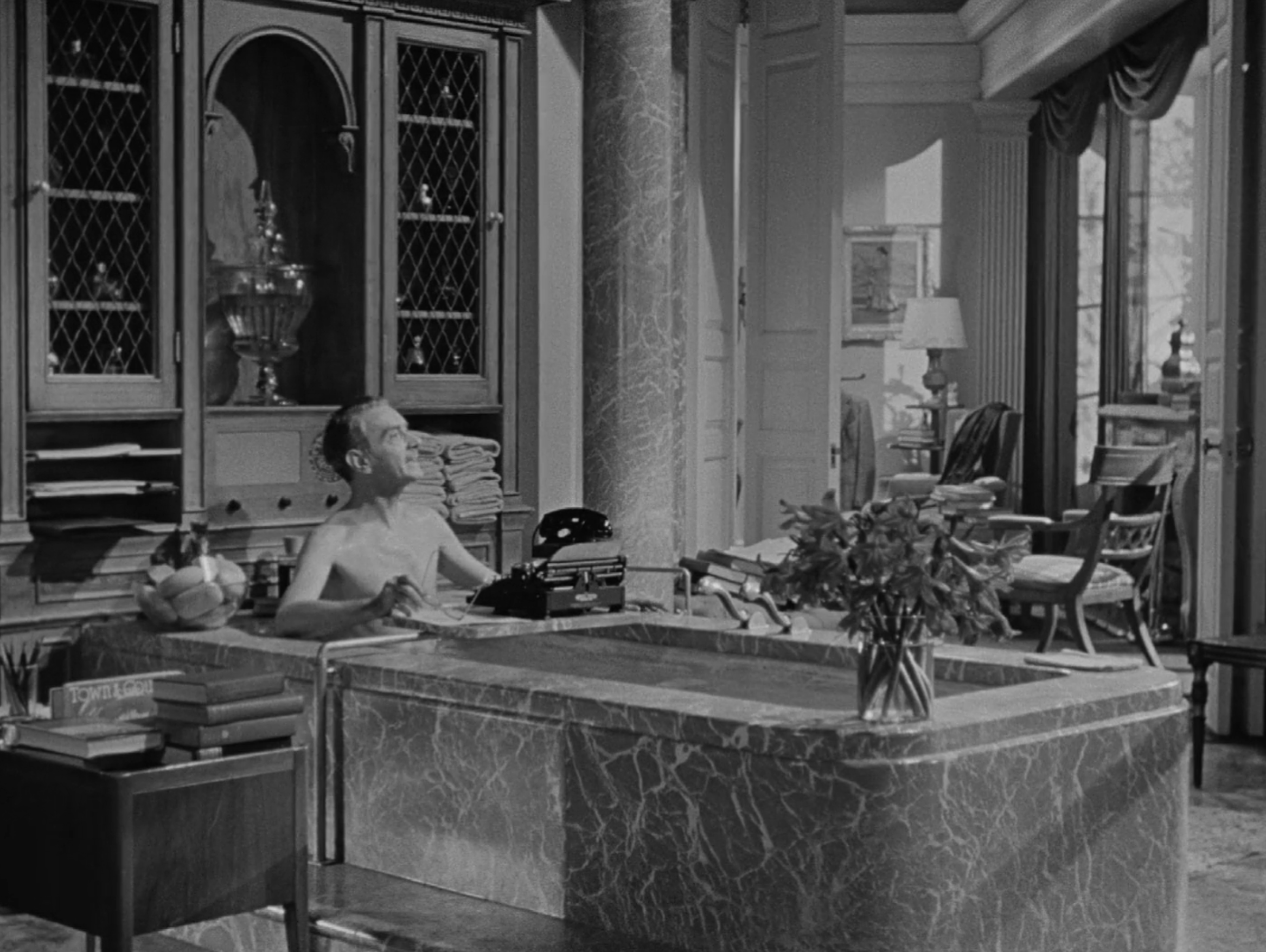If I told you that one of the queenliest, silliest, and most iconic queer characters in history can be found in a 1944 Hollywood film, what would you say?
I mean yes, I’m aware that gay representation goes back centuries, and the Hollywood era had its fair share of gay icons, lesbian directors, and closet queens. But this character is something special. Played by an all-but-out gay man who made his name on the stage and written with his vicious gay sensibility in mind, Waldo Lydecker is something of a cross between Alexander Woollcott and Noel Coward. When we first meet him in Otto Preminger’s Laura, he’s luxuriating in the bathtub while typing. He’s also discreetly ogling the man who’s just entered his apartment, a hard-boiled detective investigating Lydecker for the murder of Laura Hunt (Gene Tierney), an advertising executive and Lydecker’s close personal friend.
To the untrained eye, Lydecker’s character might not seem so much gay as aristocratic. He has a classic mid-Atlantic accent, dresses impeccably, and says things like “I’m not kind, I’m vicious. It’s the secret of my charm.” The bon mots simply trip off Lydecker’s tongue, and as the narrator of Laura, it’s through him that we learn the details of the mystery as it unfolds. But whether he’s reading one of Laura’s suitors to filth or summing up his attitude toward humanity in general (“I should be sincerely sorry to see my neighbor’s children devoured by wolves”) he never stops serving. He and Laura are best friends, and more importantly, equals. They’re like Carey and Brooke from “The Other Two,” bound together by their own unapologetically honest, bitchy vision of the world, and forever surrounded by morons.
Related:
Lily Gladstone’s emotional ‘Variety’ speech left the room raw
“I have always known that acting is my activism.”
Which is why the movie—despite being brilliant and one of the finest noirs ever made—doesn’t exactly make sense. Waldo and Laura’s friendship is the film’s centerpiece, and we can easily believe just how and why these two intellectuals are drawn to each other. But when the final plot twist arrives, it hinges on our belief that Waldo is in love with Laura. Which isn’t exactly what’s happening: Waldo might be obsessed with her in the way that a gay man becomes obsessed with a famous woman he admires. There’s nothing sexual happening between these two, but Waldo does become extremely possessive of Laura. By the end, none of it makes sense; what was supposed to be a movie about obsessive love ends up being more about queer obsession. And for Waldo and Laura’s relationship to work, Waldo’s character has to be queer, and Laura has to be a twink. Which, honestly, she kind of is.
That Waldo Lydecker is a gay man is obvious: the question is, how obvious was it to theatergoers in 1944? It’s hard to say: on the one hand, Clifton Webb, the actor who played Lydecker, was an all-but-out gay man who, by the time he made Laura, had been working for decades, first as a song and dance man, then as a leading character actor. His Oscar-nominated turn in Laura earned him something of a career renaissance in the late 40s and early 50s.
Webb, in conversation with the director Jean Negulseco, defined himself as a “devout” homosexual, and it doesn’t take much to confirm it: in Laura, Webb plays a preening, acerbic queen with a lethal tongue. When asked if he, a famous writer, will become the world’s first fountain pen influencer by singing onto a brand deal, he declines. He never uses a pen, he explains, but a “goose quill dipped in venom” instead.
Laura is playing on the Criterion Channel as part of their November Noir series, and in addition to the fantastic Hangover Square—starring gay actor Laird Cregar, who almost got the role of Waldo Lydecker—serves as a great representation of what 1940s actors could do using nothing but a great script and a heaping load of queer subtext.♦
Don't forget to share:
Help make sure LGBTQ+ stories are being told...
We can't rely on mainstream media to tell our stories. That's why we don't lock our articles behind a paywall. Will you support our mission with a contribution today?
Cancel anytime · Proudly LGBTQ+ owned and operated
Read More in Life Compass
The Latest on INTO
Subscribe to get a twice-weekly dose of queer news, updates, and insights from the INTO team.
in Your Inbox














